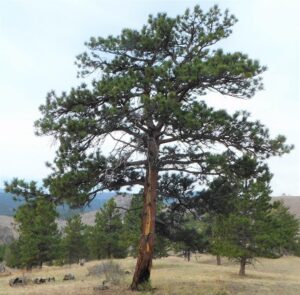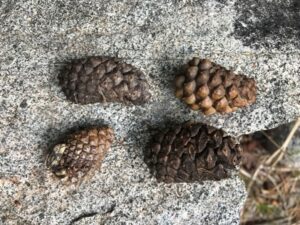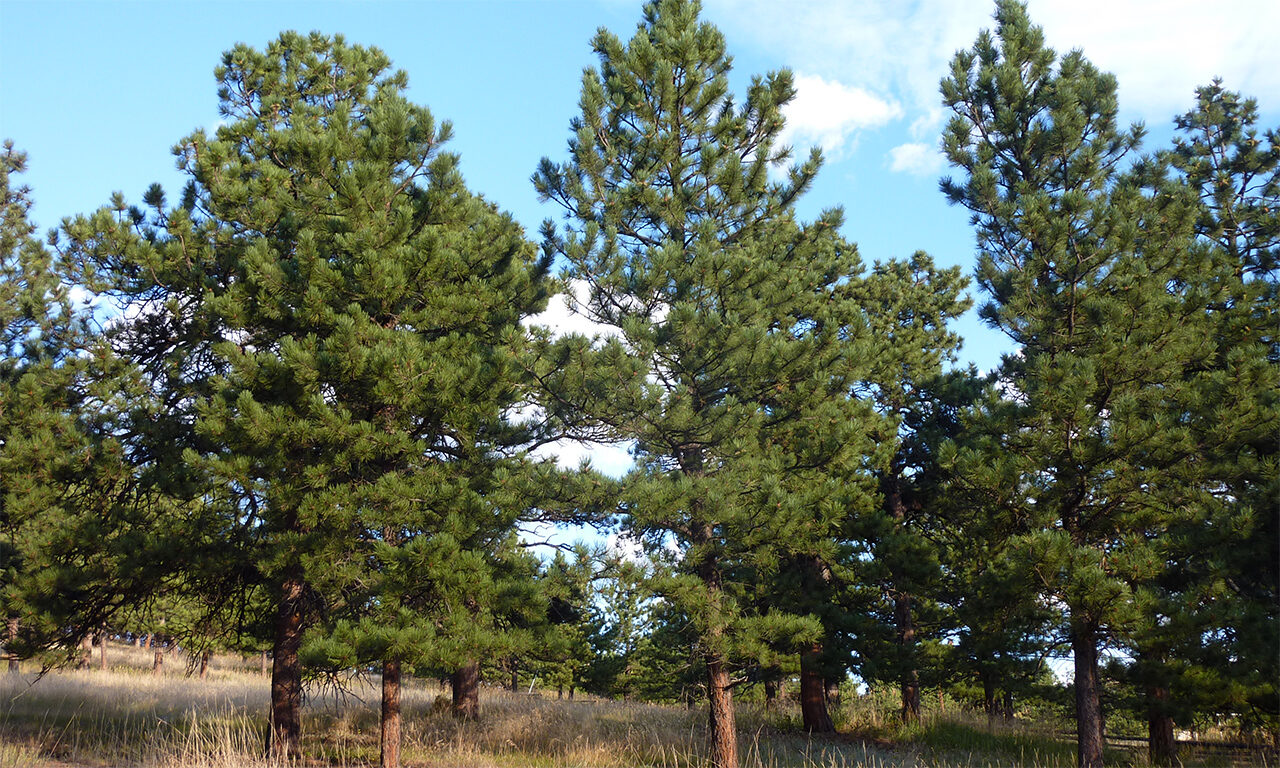The dry climate of Boulder County means that wildfires can be common, as many of its residents are aware. The behavior of these fires is shaped in part by the characteristics of certain trees, which have developed adaptations to this disturbance. Being able to identify the relationship that certain plants have with fire is essential to better understanding these fire-adapted ecosystems.
Types of Adaptations
Plants that have adapted to tolerate fire are called pyrophytes. Some have even evolved to encourage fire through various means, these are known as active pyrophytes. Plants that have developed adaptations to resist major damage from a fire are known as passive pyrophytes. These two groups respond differently to varying degrees of fire intensity and severity.
One group of pyrophytes are known as resisters . These plants can survive low to moderate intensity fires due to their adaptations that prevent fire from damaging their living tissues. A great example is the ponderosa pine (Pinus ponderosa). This tree is well adapted to dry conditions and periodic wildfires. One adaptation that they have is a thick, corky bark, which helps protect the inner tissues from heat damage. They also possess a self-pruning strategy in which they shed their lower branches over time. This prevents a surface fire from moving up the tree to the crown, where most of the living needles are. The last tool they possess is a deep root system. During a fire, the surface roots of the tree may be killed, but the deeper roots will survive and continue to provide the tree with nutrients.

Another group is known as sprouters. As the name suggests, these species re-sprout from their roots after a burn. When a fire moves through an area, it removes older and decaying vegetation, which gives the new plants more room to grow. It may cause damage to the parent plant, but the new shoots can take advantage of the nutrients in the soil after a burn. One of the most familiar sprouting species is the quaking aspen (Populus tremuloides). Aspens have a shared root system that shares nutrients between different ramets, which are the individual “trees” in an aspen grove. This shared root system enables aspens to take over a burn area quickly.
The group known as seeders has a unique relationship with fire. This group often holds its seed in the cones until high temperatures (often wildfire) open cone scales and release the seed. This is known as serotiny. An example of a serotinous tree is the lodgepole pine (Pinus contorta). Lodgepole pine forests can be very dense and are susceptible to high intensity fires, known as stand replacement fires. This refers to a fire that is lethal to most above ground vegetation thereby setting the stage for a new forest to grow. As fire moves through lodgepole forests, many serotinous cones are opened and the seeds can take advantage of nutrient rich soils and abundant sunlight

Wildfires cause a tremendous disturbance in any ecosystem. From a human perspective, it often seems like the landscape has been destroyed. To the pyrophytic plants that have developed adaptive responses to fire, however, these disturbances are simply a fact of life for them. Some can resist the damages that come with a burn, while others use the heat to either expand its territory or bring forth the next generation. By coming to an understanding of the role that fire has in the life cycle of these trees, the people of Boulder County can adapt themselves to these ecosystems and create resilient landscapes for future generations of our own.


